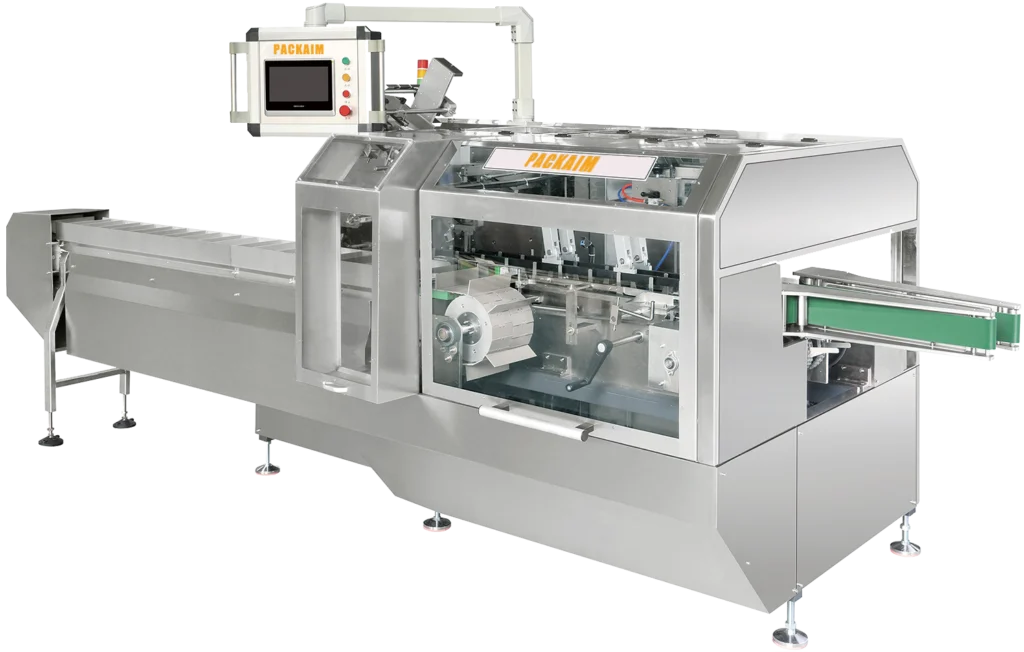
Cartoning Machine
Your Trusted Cartoning Machine Supplier
PACKAIM is one of the cartoning machine manufacturers in China. We are dedicated to providing top-quality packaging solutions to businesses of all sizes. Whether you need a cartoning machine for food products, pharmaceuticals, or other goods, we have the expertise and experience to help you find the right solution. Contact us today to learn more about our products and services and to find out how we can help your business grow and thrive.
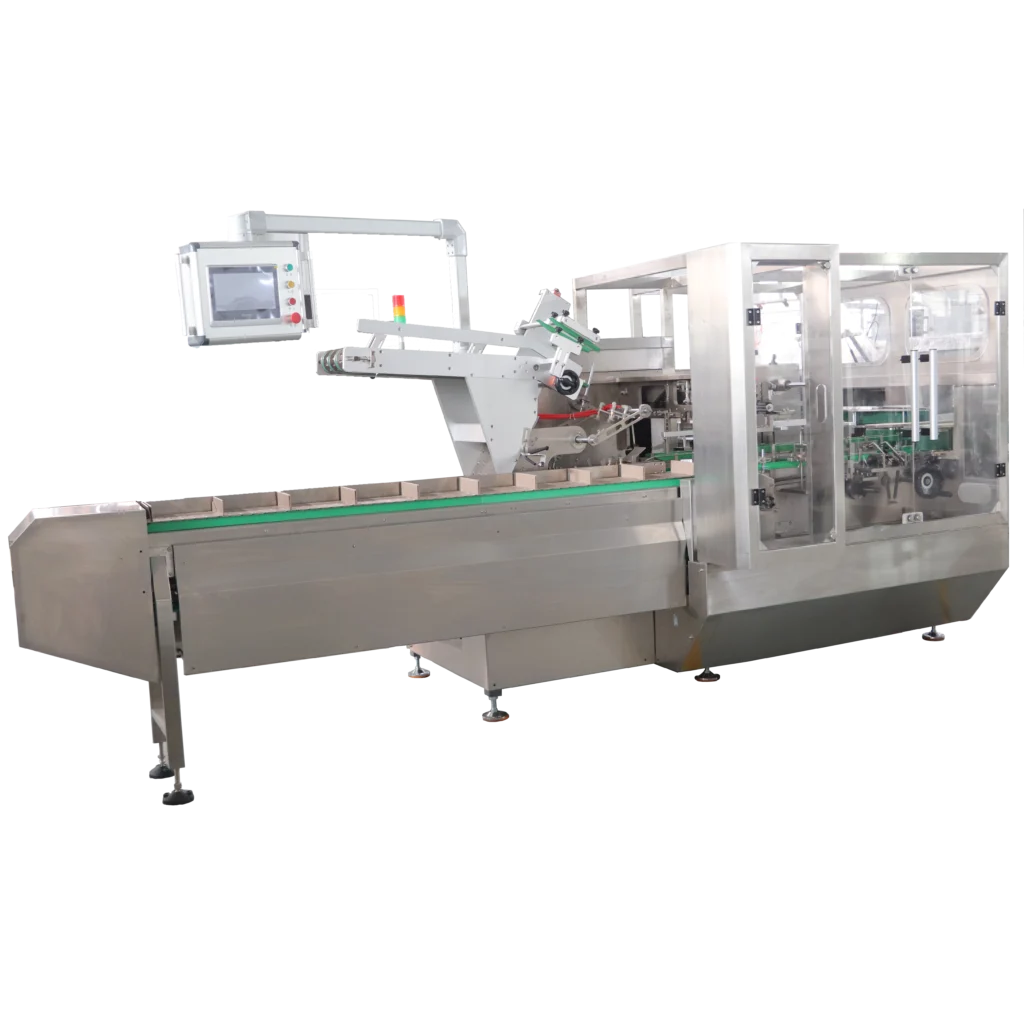
Cartoning Machine PAC-60
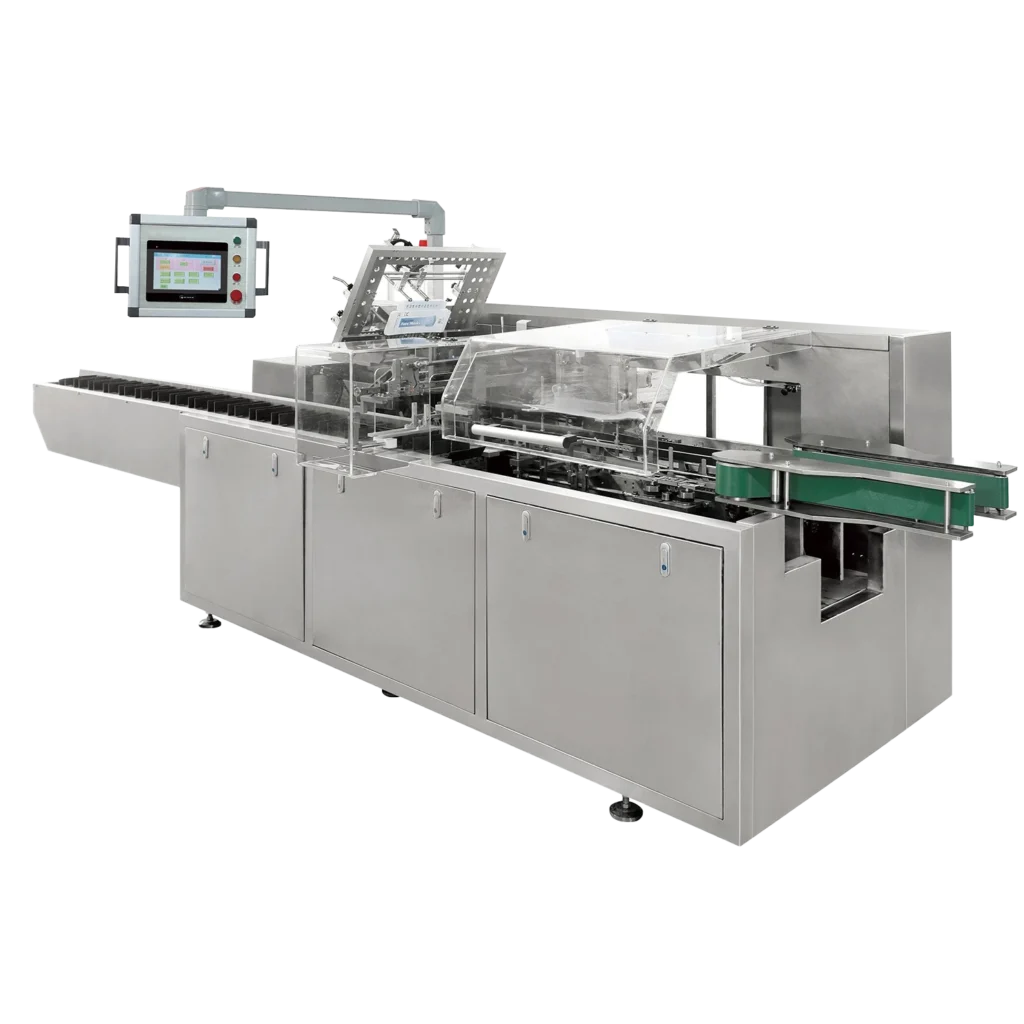
Cartoning Machine PAC-80
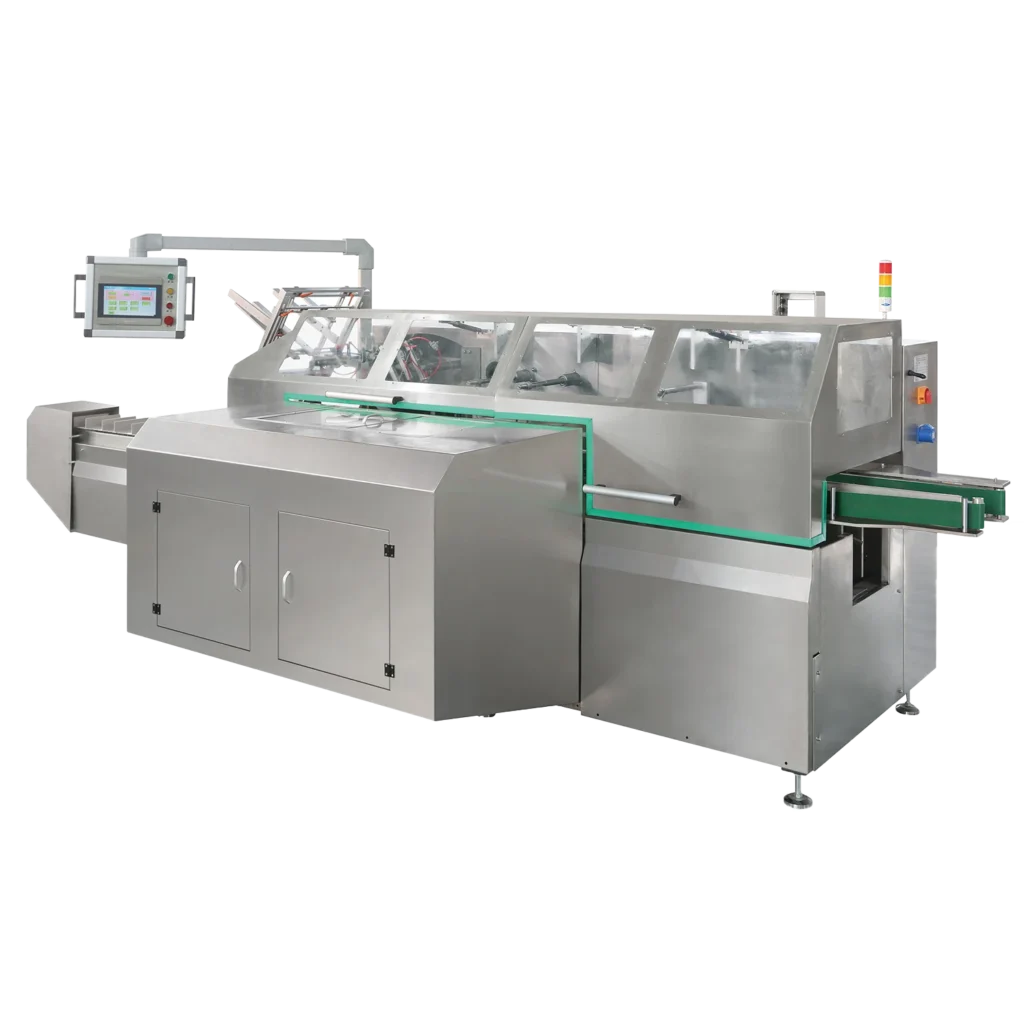
Cartoning Machine PAC-150
What Are Cartoning Machines
Cartoning machines are packaging machines that automate erecting, folding, filling, and closing of cartons or boxes.
They can handle a variety of cartons, including tuck flap cartons, glue flap cartons, and sleeve cartons. Depending on the packaged product, some machines can even work with multiple carton styles.
How Cartoning Machines Work
The first step in the cartoning process is to load the products onto the machine’s hopper or infeed system. This can be done either manually or using an automated feeding system, based on the manufacturer’s needs.
After loading the products, the conveyor will feed them into the cartoning section. The carton blanks, taken from the magazine, are then transformed into a durable box shape. A pusher or feeding system will place the products into the carton, which is then closed and sealed.
There are various methods to seal the carton. One popular option is hot melt glue, which is applied to the carton flaps before being firmly pressed together. Another approach is to use tuck flaps, which are tucked into the sides of the carton and secured by friction.
After the carton is securely sealed, it is discharged from the machine and ready for transportation to the next phase of the packaging process.
Benefits of Cartoning Machines
- Increased Efficiency
- Automate packaging, boosting efficiency.
- Handle large product volumes.
- Continuous operation with minimal supervision.
- Improved Product Quality
- Deliver high precision and accuracy, improving product quality and consistency.
- Minimizing the risk of product errors and defects.
- Ensure that products are presented uniformly, enhancing brand perception.
- Reduced Waste
- Minimize waste, reducing the environmental impact of packaging.
- Precise material usages, such as glue or carton blanks.
- Versatility
- Handle a wide range of products and carton styles.
- Accommodate different sizes, shapes.
- Offer customization options.
- Cost-effective
- Reduce labor and material costs.
- Reduce lead time.
- Offer long-term cost savings.
What Cartoning Machines Are Used for
Cartoning machines are used in the manufacturing industry for the automated packaging of a wide range of products. These machines can handle a variety of products, such as pharmaceuticals, cosmetics, food, and consumer goods. They can ensure each product is packaged securely, which is important for protecting the product during shipping.
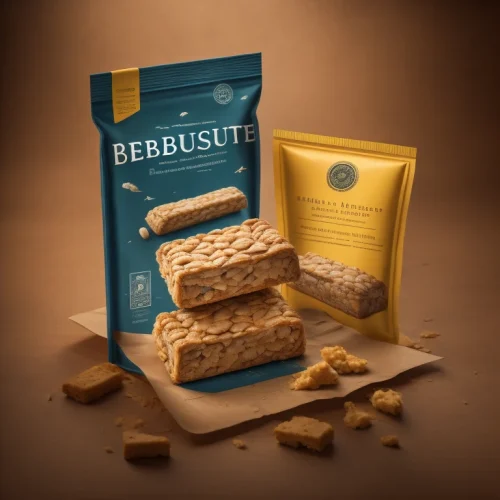
Food and Beverage Packaging
Cereal, snack foods, frozen foods, and beverages.

Pharmaceutical Packaging
Pills, tablets, capsules, syringes, and other medical products.

Cosmetic Packaging
Lotions, creams, and perfumes

Household and Personal Care Product Packaging
Soaps, shampoos, and cleaning products.
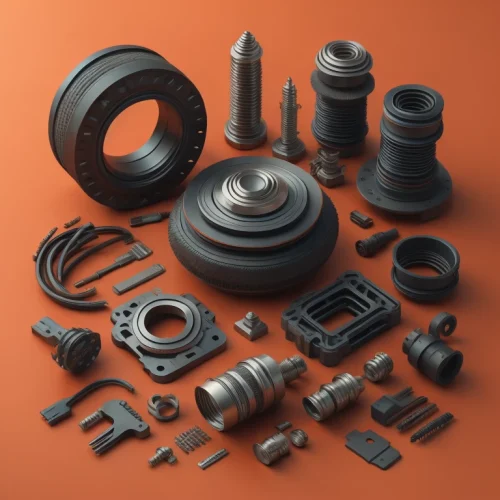
Industrial Packaging
Automotive parts, hardware, and electronic products.

Confectionery Packaging
Chocolate, sweets, candies, and chewing gum.
How Are Cartoning Machines Made
- 1. Design and Engineering
Creating detailed drawings and specifications for the machine, as well as determining the materials and components that will be used in its construction.
- 2. Fabrication
Cutting and welding metal parts, machining components from raw materials, and fabricating plastic or composite parts.
- 3. Assembly
Fitting the components together and integrating the machine’s electrical, pneumatics and control systems.
- 4. Programming
Creating a software program that controls the various motors, sensors, and other components of the machine.
- 5. Testing and Quality Control
Testing the machine’s speed, accuracy, and reliability. Verifying that it meets safety and regulatory requirements.
- 6. Packaging and Shipping
Disassembling the machine if needed for transport, wrapping it in protective materials. Arranging for shipment to the customer’s location.
- 7. Installation and Commissioning
Setting up the machine and integrating it into the customer’s production line. Training the customer’s staff on how to operate and maintain the machine.
Cartoning Machines by Motion
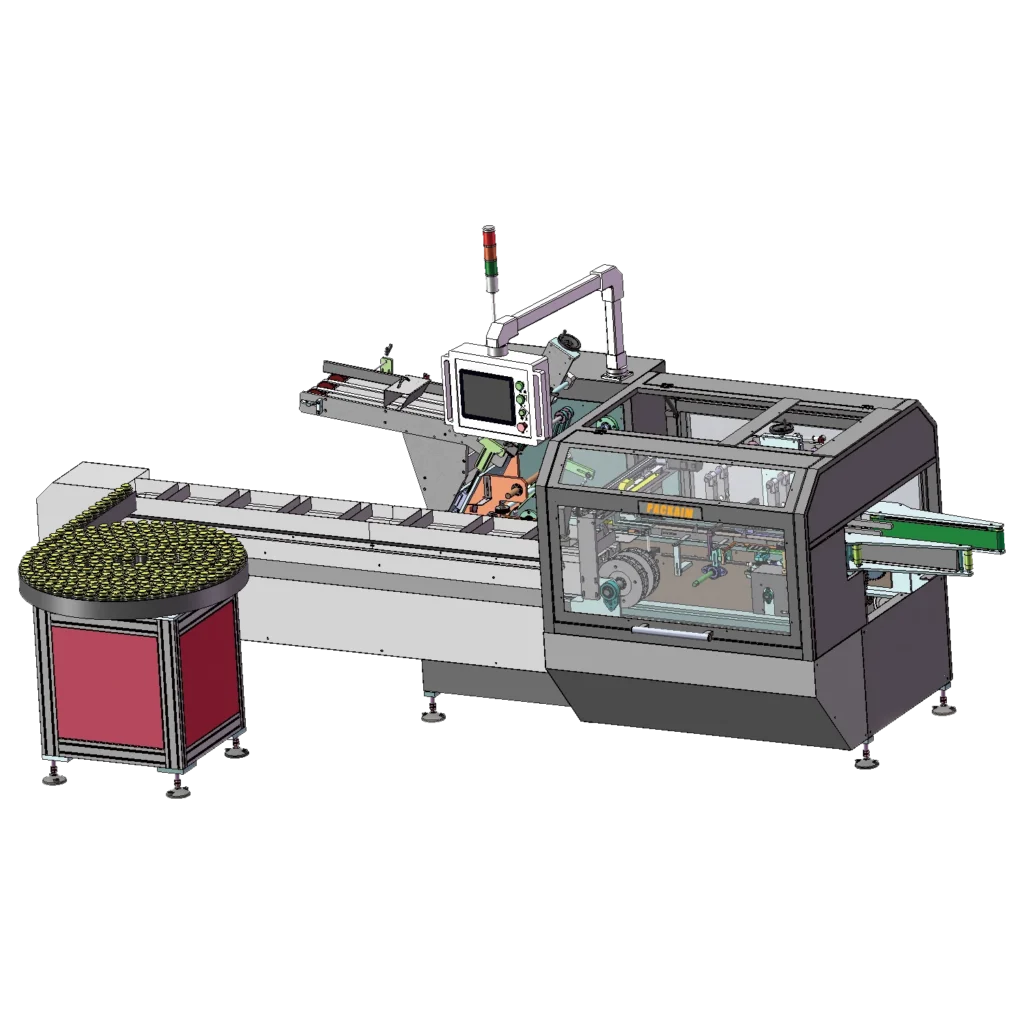
Intermittent motion cartoning machines
Intermittent motion cartoning machines are operate intermittently, with products and cartons moving in a stop-start motion through the machine. They are suitable for packaging food or confectionery at slower speeds. These machines are designed for lower production volumes, usually up to 150 cartons per minute.
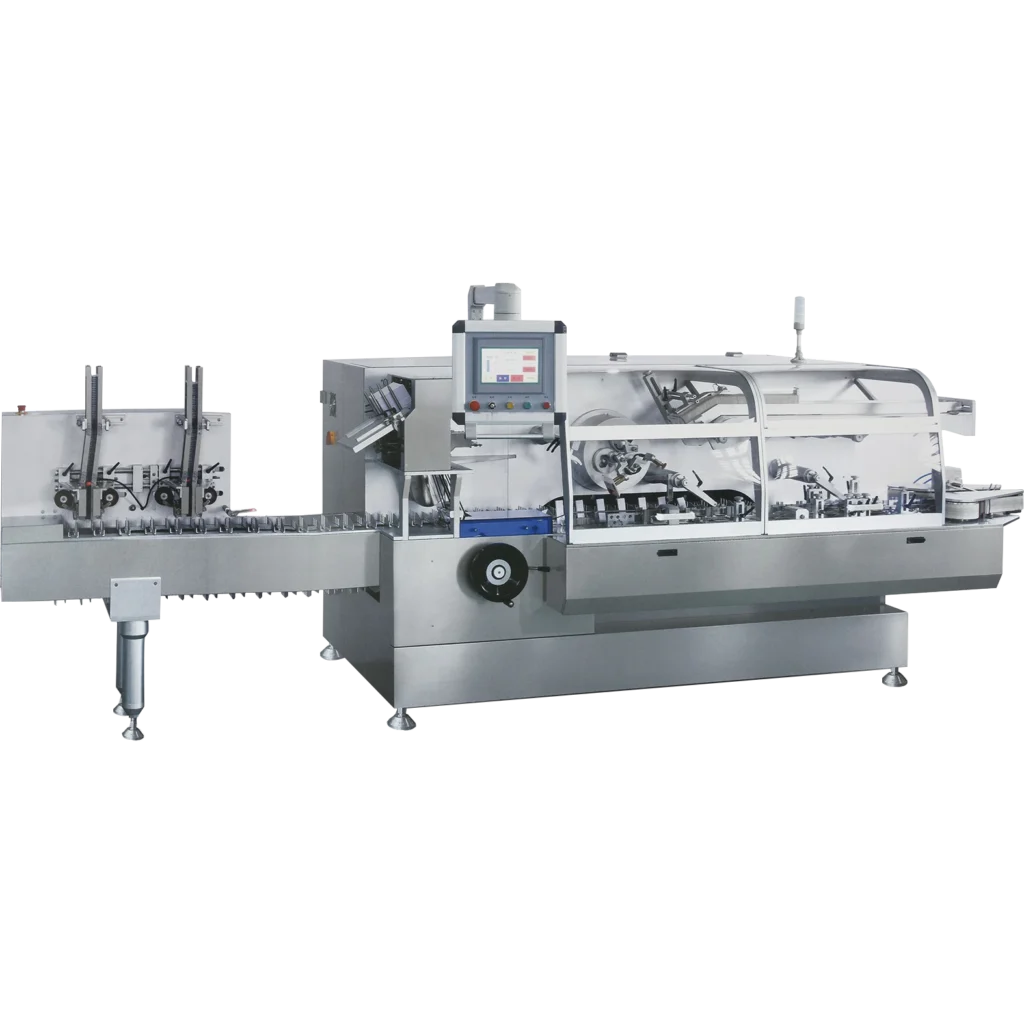
Continuous motion cartoning machines
Continuous motion cartoning machines are designed to operate continuously, with products and cartons moving continuously through the machine. These machines are used for high-speed packaging applications, such as packaging pharmaceuticals or cosmetics. They are capable of handling high production volumes, usually up to 400 cartons per minute or more.
Cartoning Machines by Direction
Horizontal Cartoning Machines
These machines are designed to package products horizontally, usually in a lying position. They are ideal for products that are flat or wide, such as blister packs, pouches, and sachets.
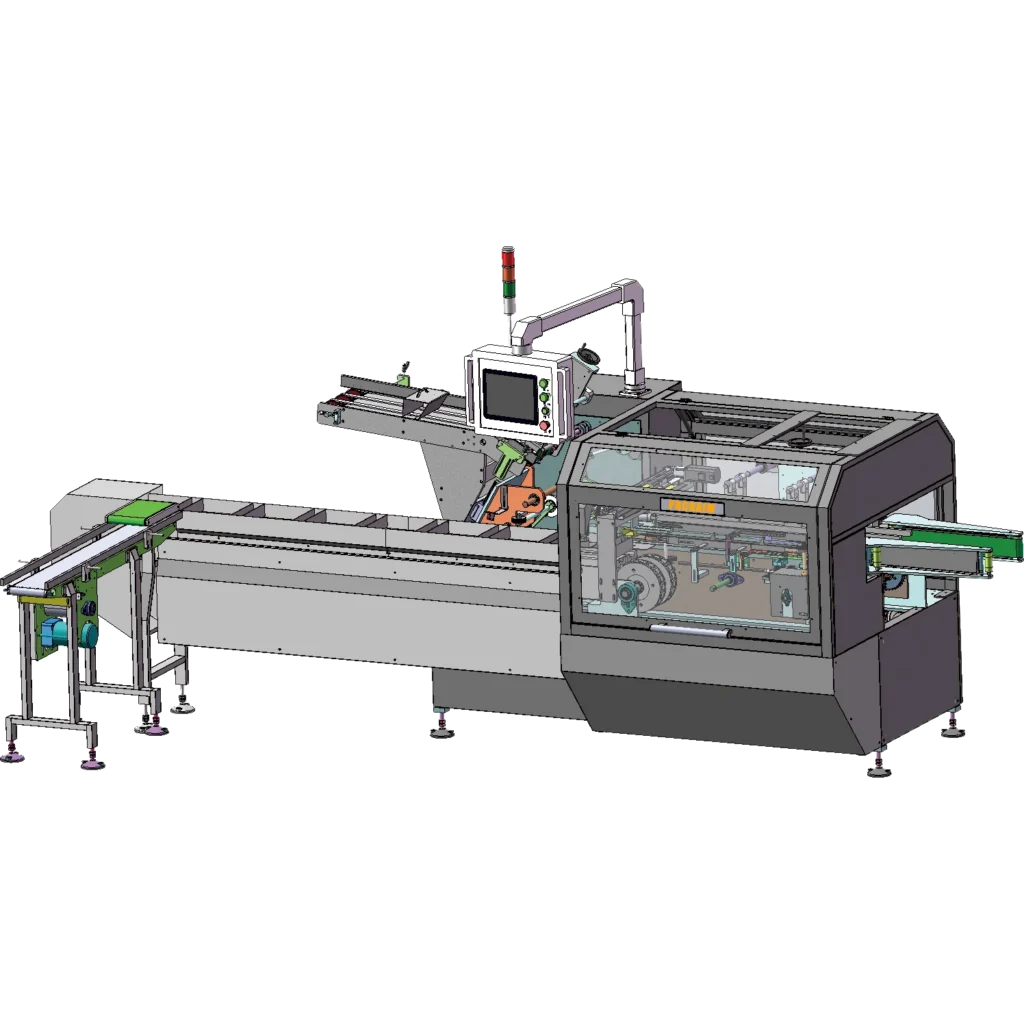
Vertical Cartoning Machines
These machines are designed to package products vertically, usually in a standing position. They are ideal for products that are tall and narrow, such as bottles, tubes, and jars.
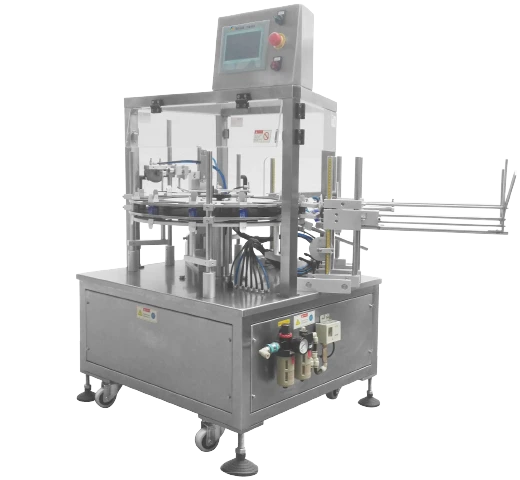
Cartoning Machine Design , Factors to Consider
- Product characteristics
Cartoning machines must be compatible with the product being packaged. This includes the size, shape, weight, and fragility of the product. For example, a cartoning machine designed for packaging fragile items like glass bottles would need to have a gentler handling system than a machine designed for packaging more robust items like cans.
- Carton Style
Different products require different types of cartons. The cartoning machine must be able to accommodate those cartons. You need to consider the size, shape, and closure type of the carton. For example, a cartoning machine for tuck flap cartons would not be suitable for packaging glue flap cartons.
- Production Volume
Cartoning machines must be able to accommodate the desired production volume. Such as the speed of the machine and the size of the carton magazine. For high-volume production, a continuous motion cartoning machine may be more suitable. An intermittent motion machine may be sufficient for lower-volume production.
- Operator Ergonomics
Cartoning machines should also take into account the ergonomics of the operator who will be using them. Ease of use, accessibility of controls, and the need for manual intervention.
- Maintenance and Cleaning
You should also take into account the ease of maintenance and cleaning. This includes factors such as accessibility of machine parts, ease of disassembly and reassembly, and the ability to clean the machine thoroughly.
Choosing the Right Cartoning Machine
- 1. Type
You should consider what type of machine suits your product best. If your product is loose or flows freely, a vertical cartoning machine might be a good fit. However, if your product can be horizontal or vertical loading, a horizontal machine is usually better. Most cartoning machines work better for horizontal loading. Also will be more flexible and cheaper.
- 2. Speed
To find the best cartoning machine, match its speed to your production capacity. Whether you package online or offline, calculate your max capacity and choose the suitable speed. Remember to think about potential increases in production from future expansion or improvement.
- 3. Flexibility
If you have products that come in different sizes and shapes. So it’s important to have a cartoning machine that can handle these variations. Also, it should be easy to change over for different products. This will reduce downtime between production runs and improve productivity.
- 4. Technical capabilities
Make sure the machine matches your technical capabilities. Avoid overly complicated machines that may cause problems down the road. To find out if the equipment is right for your needs, talk to other companies like yours when researching suppliers. Make sure the supplier understands your product and is aware of any equipment limitations before you buy.
- 5. Budget
You might think that the most expensive machine is the best, but it’s important to choose one that you can afford. You’ll also need to consider the ongoing costs associated with maintenance and operation.
- 6. Support
Cartoner cannot be separated from supplier technical support. The supplier should provide comprehensive support, including training, installation, and maintenance. They should also have a responsive customer service team that can address any issues promptly.
Maintenance and Troubleshooting
Cartoning machines are a big investment for any business, so it’s important to maintain and troubleshoot them regularly. This ensures their efficient and effective operation.
Regular Maintenance
- Cleaning the machine regularly to prevent the accumulation of dust, dirt, or debris.
- Lubricating the machine as per the instructions.
- Checking the machine’s belts, chains, and other moving parts to ensure their function.
- Inspecting the electrical components of the machine for wear and tear.
- Adjusting the machine to ensure it is operating at its best performance.
Troubleshooting
- Product Jams
If the product jams inside the machine, stop the machine and remove the product causing the jam. Clean the area before restarting the machine.
- Inconsistent Carton Folding
Ensure that the carton board is of appropriate quality and thickness, and it is being loaded correctly into the machine.
- Motor Issues
If you observe a drop in motor performance, check the machine’s lubrication levels and belts. If the problem persists, contact a technician for repair.
- Control Panel Malfunctions
If the control panel of the cartoning machine fails to operate correctly, check the wiring and power supply of the machine. Contact a qualified electrician or technician to resolve the electrical issues.
The FAQs About Cartoning Machine
Can a cartoning machine be integrated into an existing production line?
Yes, we can integrate cartoning machines into your existing production lines. Either by connecting them directly to other machines or by using conveyors to transfer products.
What are the maintenance requirements for a cartoning machine?
The maintenance requirements for a cartoning machine depend on the specific machine, but generally include regular cleaning, lubrication, and replacement of worn parts.
How do I choose the right cartoning machine for my business?
The right cartoning machine will depend on your specific product requirements, production volume, and budget. Consulting with PACKAIM can help you determine the best machine for your needs.
What is the lead time for a cartoning machine?
Our standard production time is 30 working days. But if you require customization, it may take a bit longer. Feel free to reach out to our sales team to receive an estimated delivery time before placing your order.
How long does it take to set up and install a cartoning machine?
Setting up and installing a cartoning machine can vary depending on the specific model and configuration. PACKAIM has some standard models only take a few days.
What is the difference between a manual and automatic cartoning machine?
Manual cartoning machines need operators to manually load products into the machine. Automatic cartoning machines use advanced automation systems to perform these tasks.
Ready to Revolutionize Your Packaging Process
Send an Inquiry Now and Find Out How Our Advanced Cartoning Machines Ensure Maximum Efficiency.
